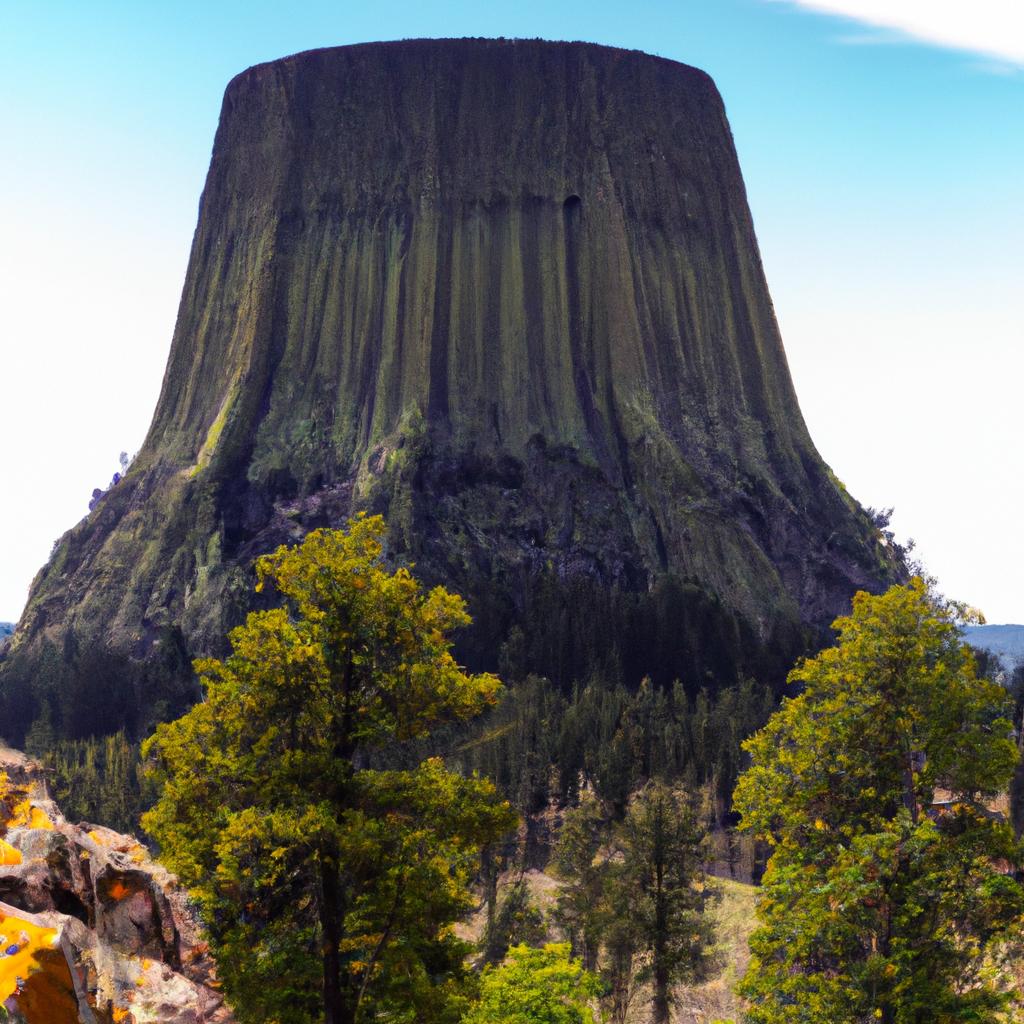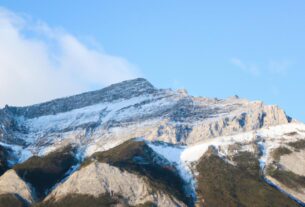Introduction:
Welcome to the fascinating world of Devils Tower Basalt – a magnificent geological formation nestled in the Black Hills of Wyoming, USA. This towering wonder has captivated the hearts and minds of people for centuries, owing to its unique shape and profound cultural significance among Native Americans. Join me as we delve into the history, formation, physical characteristics, uses, tourism potential, and conservation efforts of this geological marvel.
Formation of Devils Tower Basalt
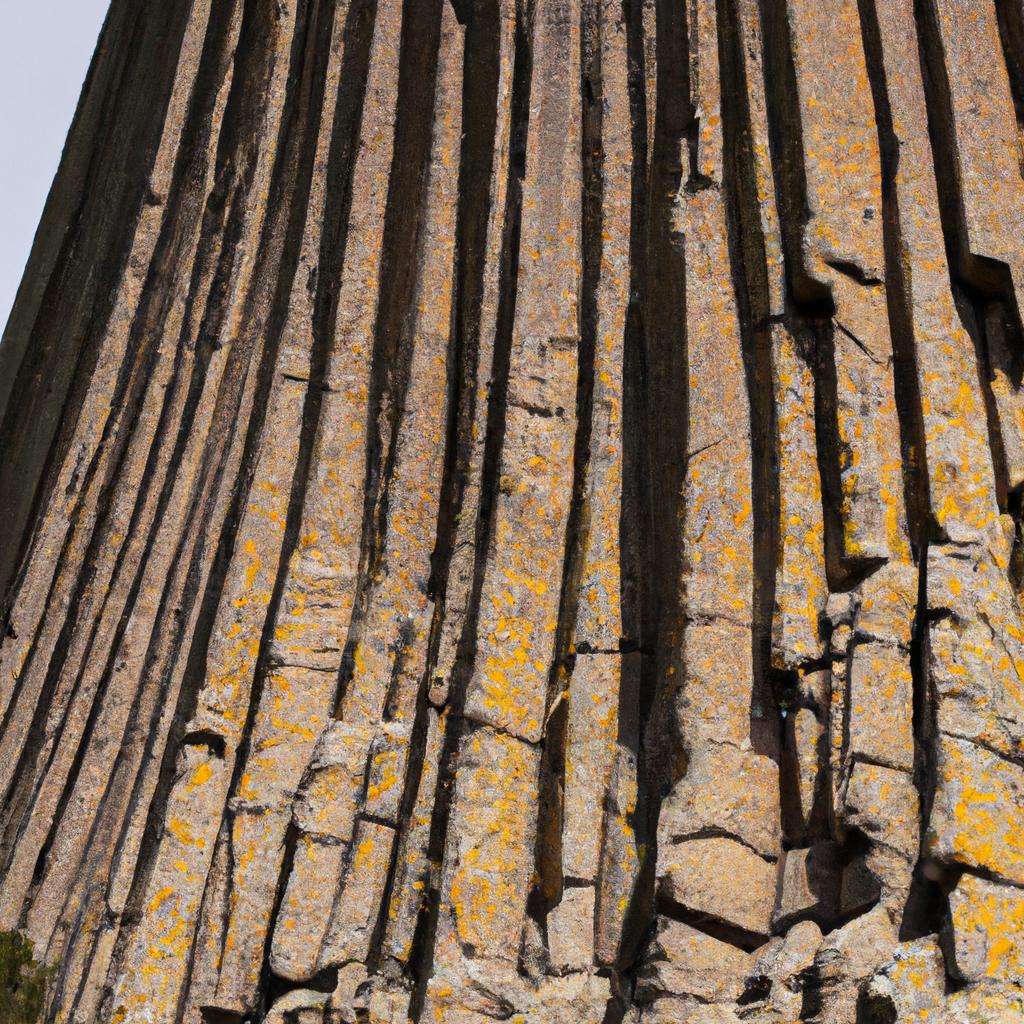
Devils Tower Basalt, a geological treasure that has intrigued scientists for decades, originated millions of years ago during the early Eocene epoch. Molten magma forcefully pushed through the earth’s crust and gradually cooled, forming solid rock. Over time, erosion wore away the surrounding sedimentary rock, leaving behind the awe-inspiring tower-like structure we know today.
How it was formed
Devils Tower Basalt owes its formation to volcanic neck formation, a geological process that occurs when magma rises through the earth’s crust and solidifies within an active volcano’s vent. As the softer surrounding rock gradually erodes, it reveals the solid rock formation that distinguishes Devils Tower Basalt from similar formations.
The composition of the rock
Devils Tower Basalt primarily consists of igneous rock with a high concentration of iron and magnesium. Classified as an intrusive igneous rock, it formed beneath the earth’s surface, allowing for slow cooling that resulted in a dense and fine-grained texture. The rock’s remarkable columnar jointing, a consequence of the cooling process, formed vertical hexagonal columns that lend the tower its unique appearance.
Physical Characteristics of Devils Tower Basalt
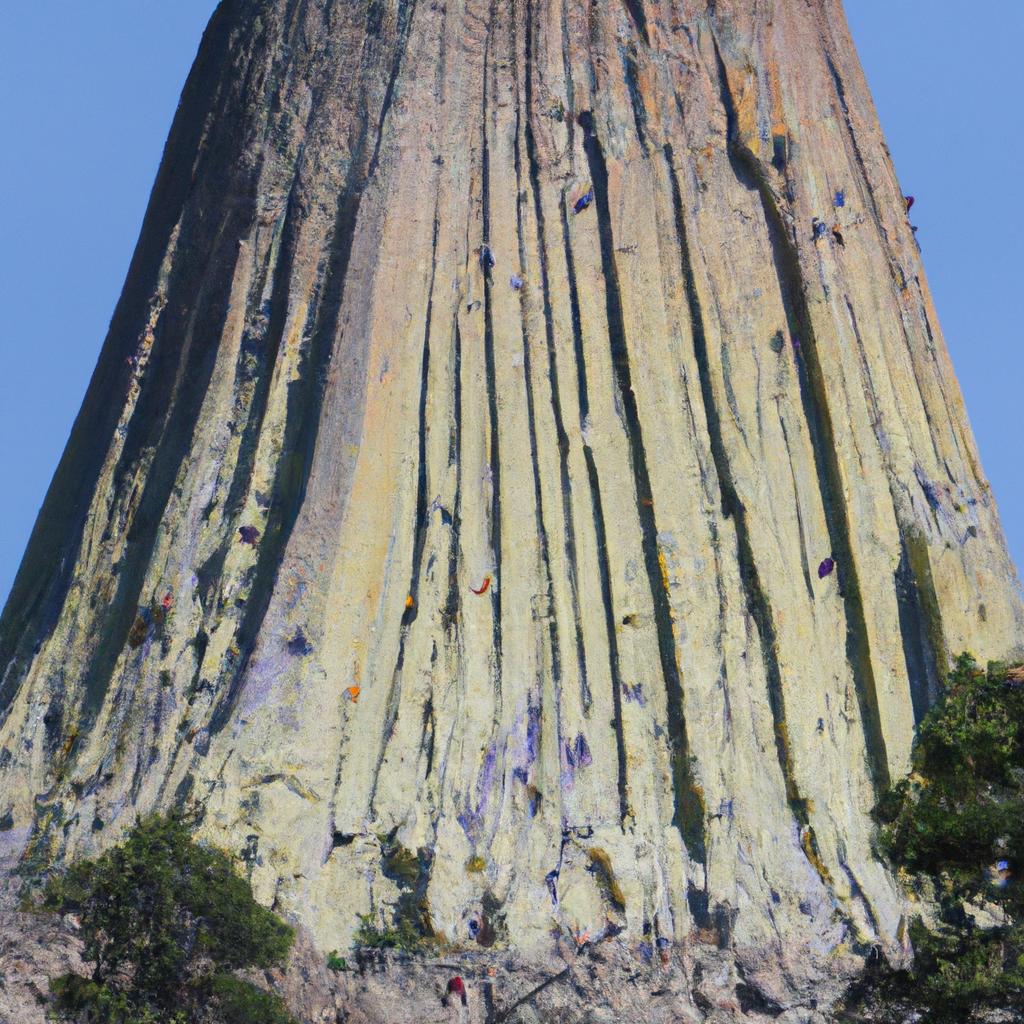
Color and Texture
Devils Tower Basalt boasts a distinctive color and texture that makes it easily recognizable. The basaltic columns comprising the tower exhibit a dark grayish-brown hue, while their rough texture resembles sandpaper. These hexagonal columns, ranging in size from inches to several feet in diameter, contribute to the tower’s striking visual appeal.
Size and Shape
Standing tall at 867 feet with a base circumference of 1,000 feet, Devils Tower Basalt commands attention. Its cylindrical shape features straight sides and a slightly rounded top, while the vertical arrangement of columns bestows a characteristic appearance.
Unique Features
The columnar jointing in Devils Tower Basalt is particularly noteworthy. As lava cooled and contracted, fractures perpendicular to the cooling surface emerged, resulting in a series of hexagonal columns that interlock like puzzle pieces. Additionally, black lichen growth on the tower’s surface, found only in a few global locations, signifies the tower’s age and stability.
Utilizing the Versatility of Devils Tower Basalt
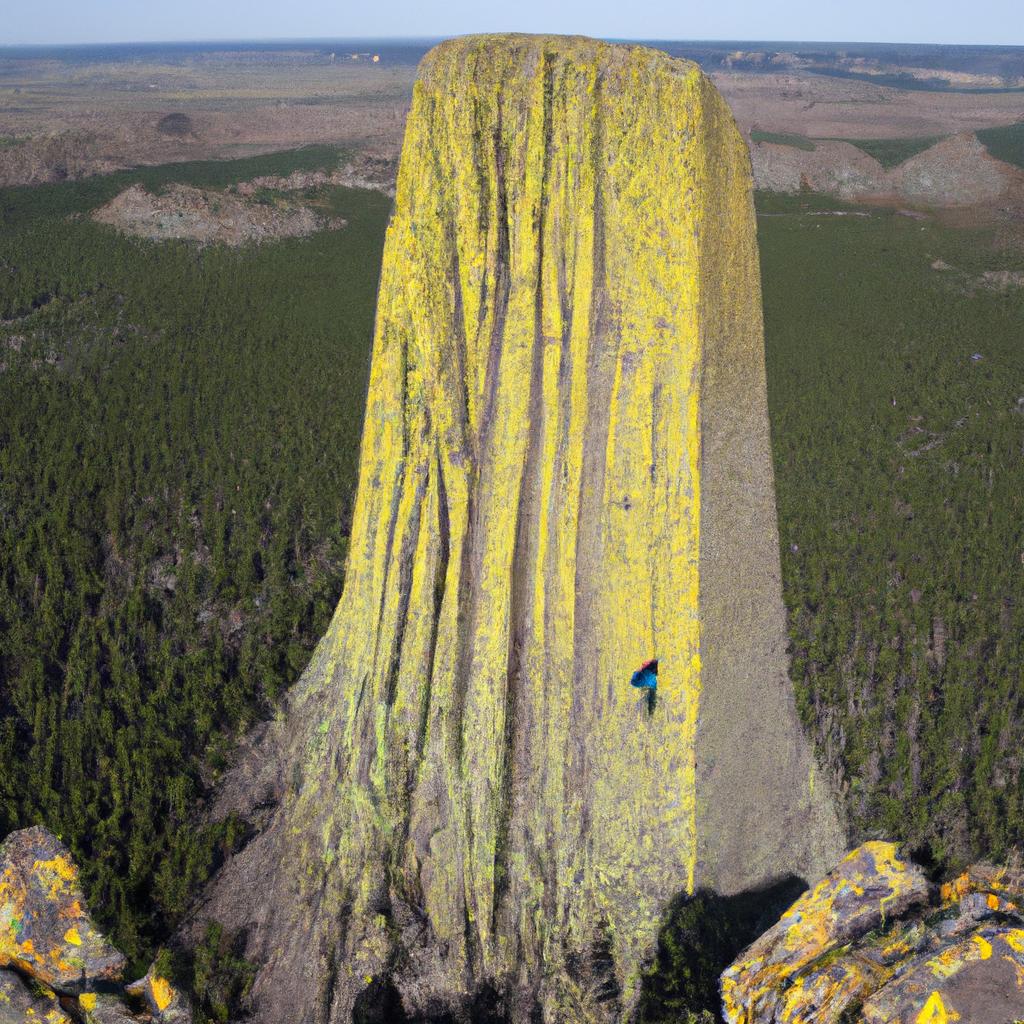
Devils Tower Basalt’s unique composition and physical characteristics make it an invaluable resource for construction and artistic applications. Let’s explore the diverse uses of this geological wonder.
Construction and Architecture
Thanks to its durability and strength, Devils Tower Basalt serves as an excellent choice for building foundations and walls. Noteworthy structures like the Crazy Horse Memorial and F E Warren Air Force Base feature this stone. Its distinctive texture and color also make it a popular option for interior and exterior design elements.
Art and Decor
The stunning appearance and texture of Devils Tower Basalt make it a sought-after material for artistic and decorative pieces. Its unique patterns and shapes have inspired sculptures, jewelry, and pottery. Native American artists often incorporate this stone into their creations to honor their culture and heritage.
Spiritual and Cultural Significance
Devils Tower Basalt holds immense spiritual and cultural importance for Native American tribes. They consider it a place of power and conduct ceremonies and rituals in its presence. Many tribes view it as a sacred site where prayers and offerings connect them with their ancestors. Consequently, the tower symbolizes unity and pride within Native American communities.
Tourism and Recreation at Devils Tower Basalt
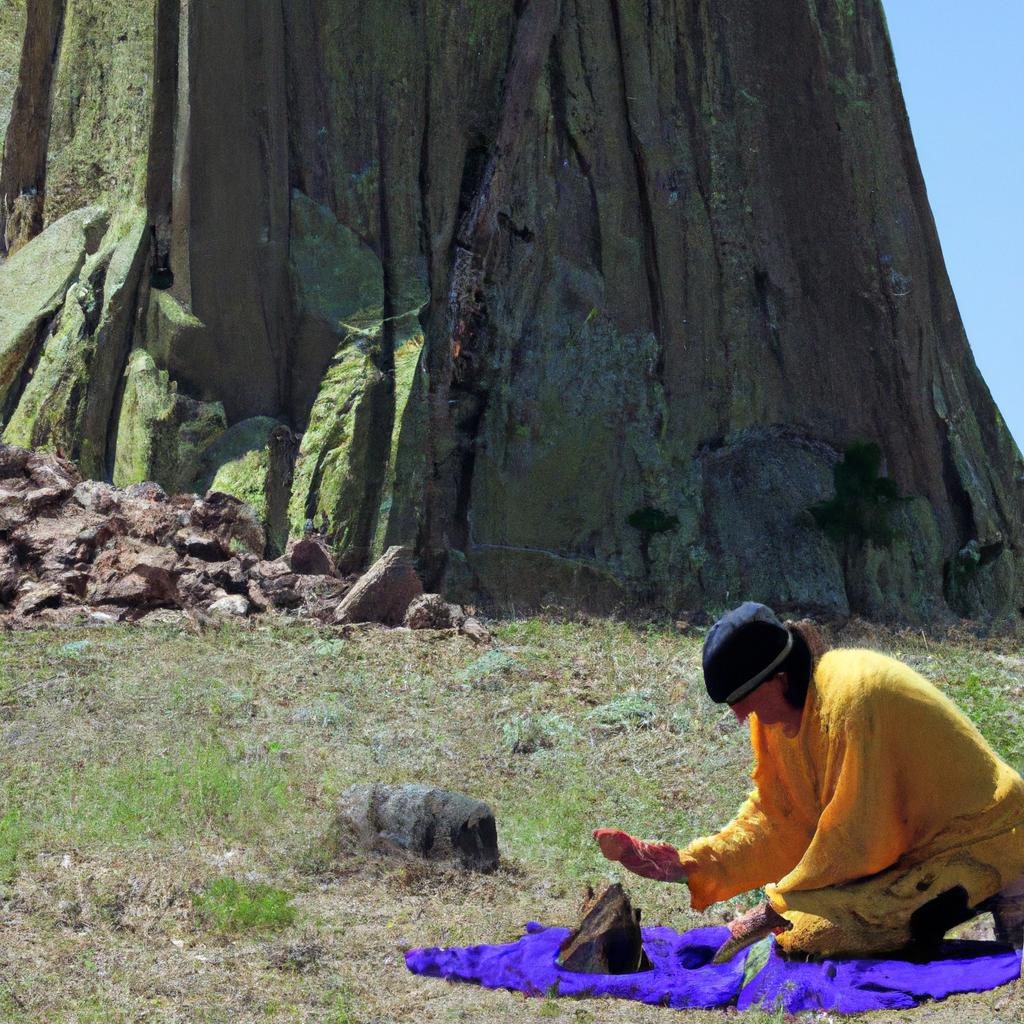
Devils Tower Basalt isn’t only an awe-inspiring geological wonder – it’s also a highly popular tourist destination. Visitors can partake in a wide range of activities, including hiking, climbing, and engaging in cultural and educational programs. Let’s explore the details:
Visitor Information and Amenities
The park is open year-round, with the peak season spanning from May to October. Visitors can obtain information and maps from the visitor center, operating daily from 9 am to 4 pm. Picnic areas, campgrounds, and restrooms are readily available for visitors’ convenience. Additionally, a gift shop offers souvenirs to commemorate their visit.
Hiking and Climbing Opportunities
Devils Tower Basalt boasts several hiking trails of varying lengths and difficulty levels. The Tower Trail, a paved 1.3-mile pathway encircling the tower, offers breathtaking views. The Red Beds Trail, on the other hand, spans 2.8 miles and meanders through the forest, treating hikers to stunning vistas. For adventurous climbers, the park offers multiple climbing routes catering to experienced climbers.
Cultural and Educational Programs
The park hosts several cultural and educational programs, offering visitors insights into the history and significance of Devils Tower Basalt. Experienced park rangers conduct daily talks and programs that cover topics such as geology, wildlife, and Native American culture. Ranger-led hikes and stargazing programs are particularly popular among visitors.
Preservation and Conservation of Devils Tower Basalt
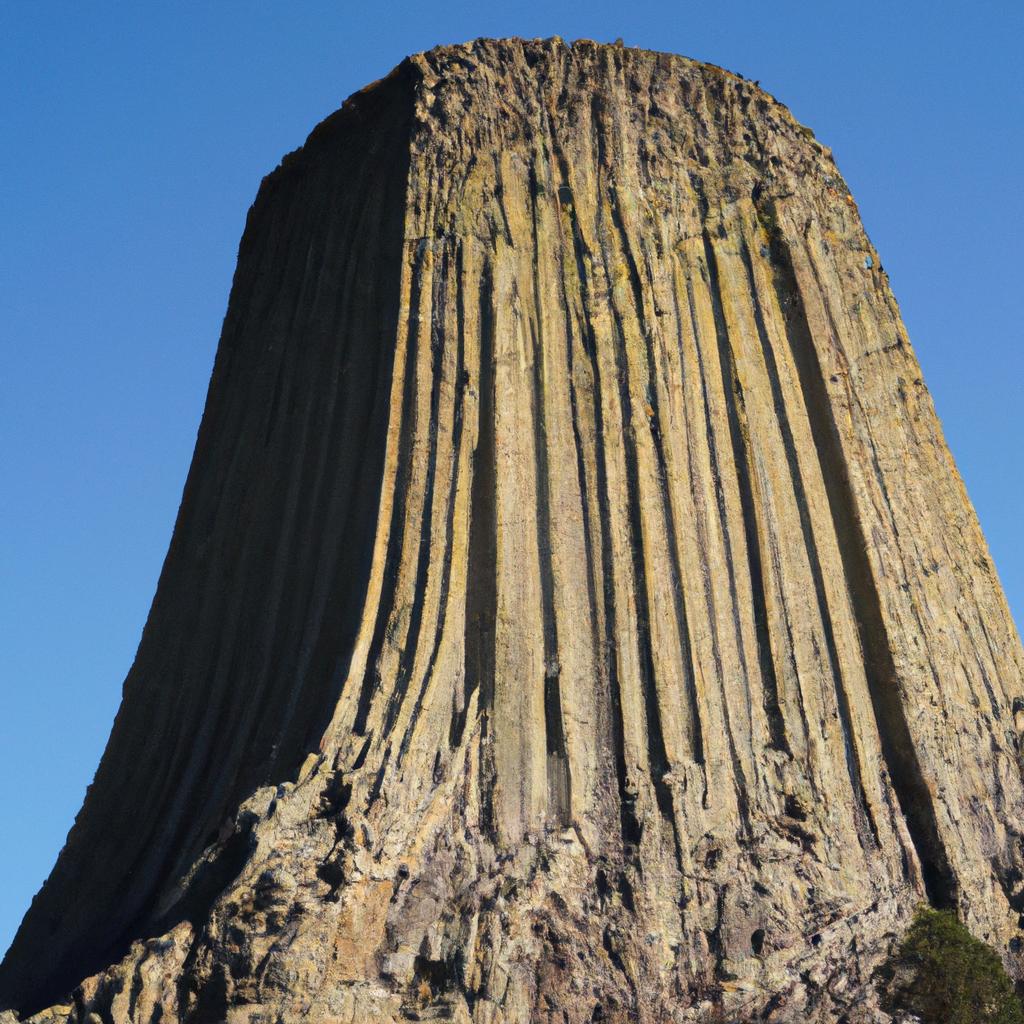
Preserving and conserving Devils Tower Basalt is paramount to maintain its natural beauty and cultural significance for future generations. The National Park Service (NPS) takes several measures to protect the tower’s natural resources and cultural value.
One primary concern revolves around human activities, such as climbing, and their impact on the tower. To respect Native American cultural traditions and minimize environmental impact, the NPS has implemented a voluntary climbing ban in June. Additionally, climbing permits are mandatory during other times of the year, with climbers expected to adhere to strict guidelines to minimize their impact.
The NPS also focuses on preserving the surrounding ecosystem by monitoring wildlife populations and curbing invasive species. Visitors are encouraged to follow Leave No Trace principles, including packing out trash and utilizing designated trails, to minimize their environmental impact.
Preserving Devils Tower Basalt isn’t solely the responsibility of the NPS – it falls upon each visitor to respect the tower’s cultural significance, adhere to NPS guidelines, and practice Leave No Trace principles. Together, we can protect and respect this extraordinary natural wonder.
In conclusion, Devils Tower Basalt remains an awe-inspiring geological formation and a site of immense cultural significance for Native Americans. Preserving and conserving this natural wonder is crucial to uphold its beauty and spiritual value for future generations. Let’s join hands in protecting and cherishing this extraordinary formation.
Article by TooLacks
